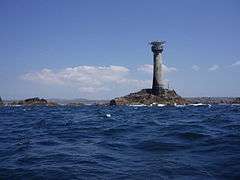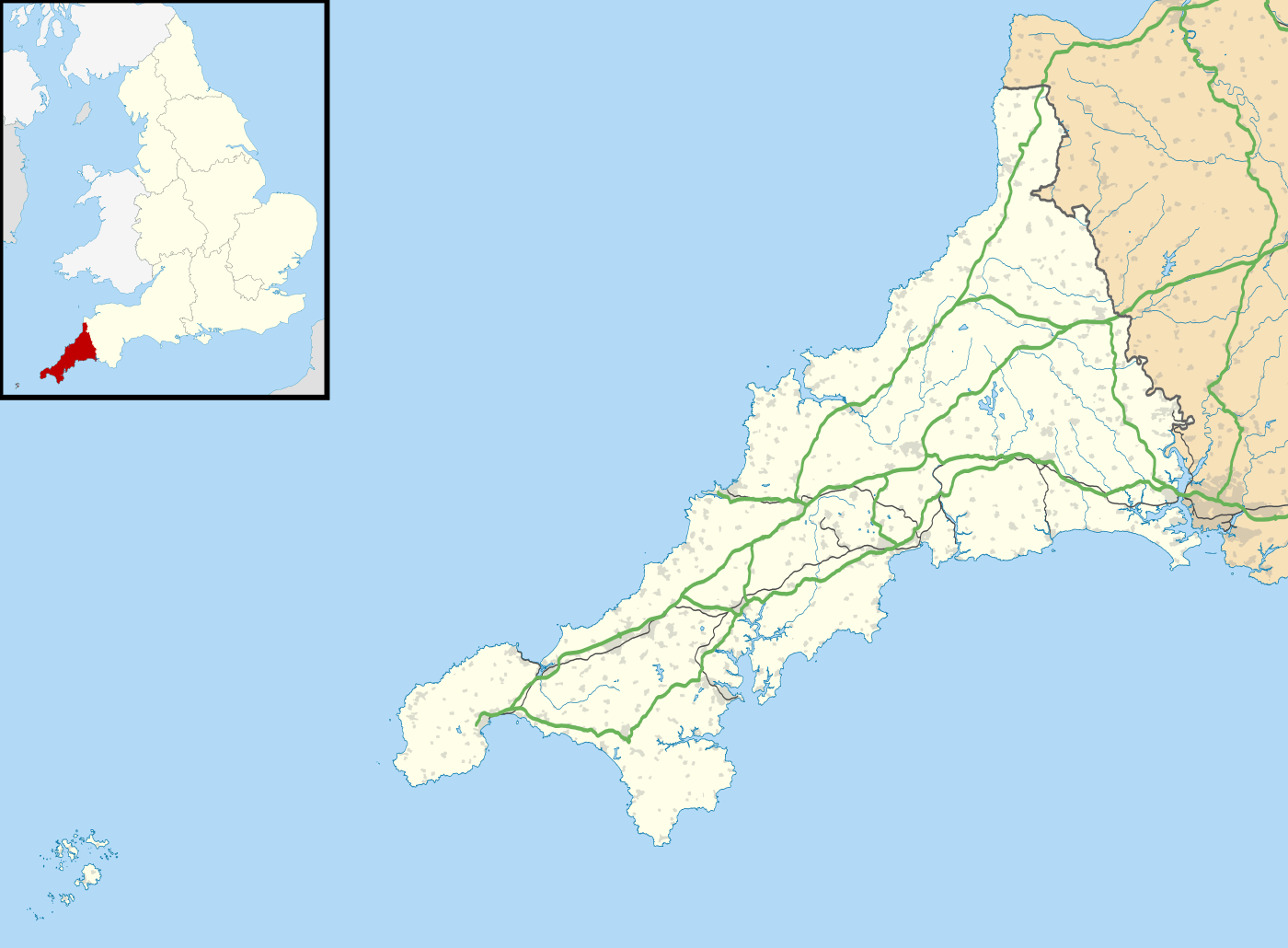Longships Lighthouse
 Longships lighthouse from the seaward side | |
 Cornwall | |
| Location |
Land's End Cornwall England |
|---|---|
| Coordinates | 50°4′00.69″N 5°44′48.39″W / 50.0668583°N 5.7467750°WCoordinates: 50°4′00.69″N 5°44′48.39″W / 50.0668583°N 5.7467750°W |
| Year first constructed | 1795 (first) |
| Year first lit | 1875 (current) |
| Automated | 1988 |
| Construction | granite tower |
| Tower shape | tapered cylindrical tower with lantern and helipad on the top |
| Markings / pattern | unpainted tower, white lantern |
| Height | 35 m (115 ft) |
| Focal height | 35 m (115 ft) |
| Current lens | First Order Dioptric |
| Intensity | 14,400 Candela |
| Range | 15 nmi (28 km; 17 mi) |
| Characteristic | Iso WR 10s. |
| Fog signal | one second blast every 10 seconds |
| Admiralty number | A0028 |
| NGA number | 0024 |
| ARLHS number | ENG 069 |
| Managing agent | Trinity House[1] |
Longships Lighthouse is a navigation aid about 1.25 mi (2.01 km) off the coast of Lands End in Cornwall, England, UK. It stands on Carn Bras, the highest of the Longships islets which rises 39 feet (12 m) above high water level. The lighthouse has been unmanned since 1988.
History

The original tower was built in 1795 to the design of Trinity House architect Samuel Wyatt. The lantern was 79 feet (24 m) above sea level but very high seas obscured its light.[2]
In 1869 Trinity House began constructing a replacement.[3] The building of the present granite tower used much of the equipment that had previously been used in the construction of the Wolf Rock Lighthouse.[3] The tower was first lit in December 1873 having cost £43,870 to build.[3] Even after these improvements, the S.S. Bluejacket was wrecked on rocks near the lighthouse on a clear night in 1898, nearly demolishing the lighthouse in the process.
Operation
The current lantern, which has a range of 11 nautical miles (20 km; 13 mi), emits one long five-second flash every ten seconds. Seaward flashes are white but they become red - due to tinted sectors - for any vessel straying too close to either Cape Cornwall to the north or Gwennap Head to the south-southeast.
Fog horn signals sound every ten seconds.
See also
References
- ↑ Longships The Lighthouse Directory. University of North Carolina at Chapel Hill. Retrieved April 23, 2016
- ↑ Trinity House website; Longships lighthouse; retrieved April 2010
- 1 2 3 Nicholson, Christopher (1995). Rock lighthouses of Britain The end of an era?. Whittles Publishing. pp. 72–73. ISBN 1-870325-41-9.
External links
| Wikimedia Commons has media related to Longships. |